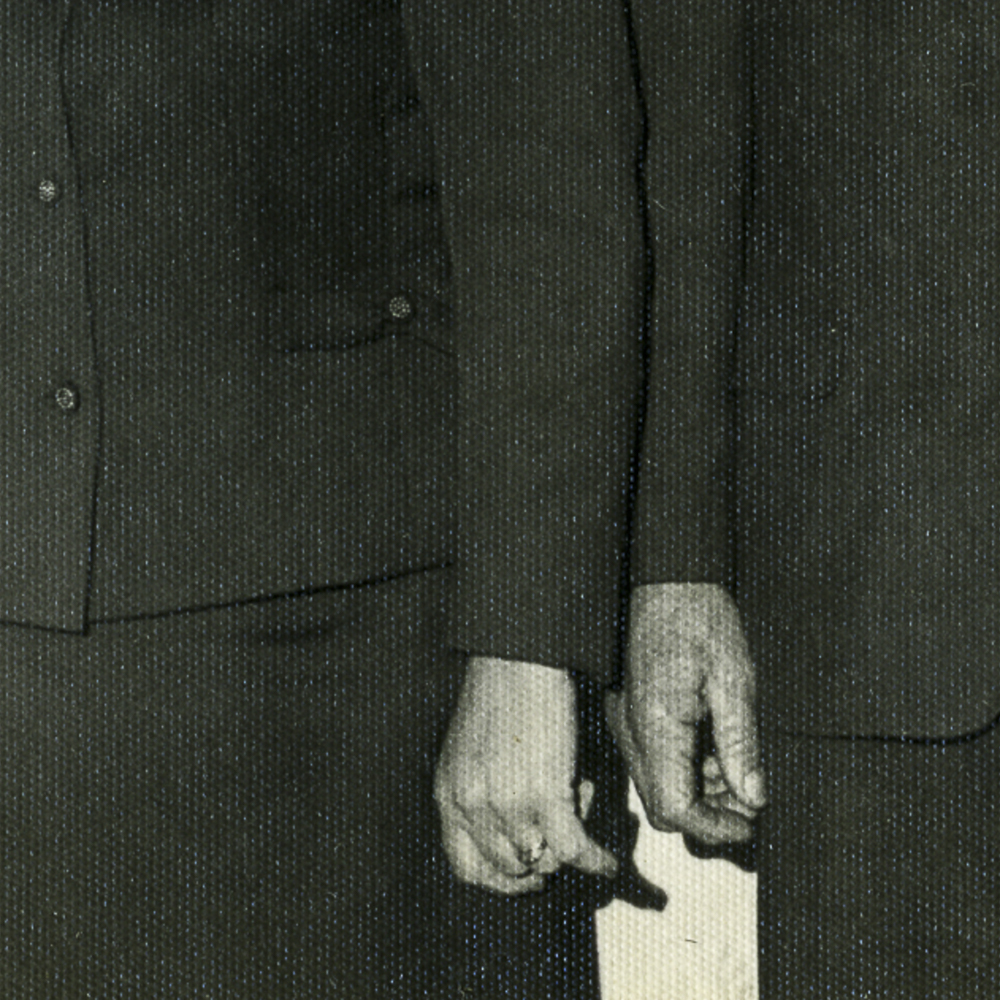Artist Blog
Every week an artist whose single image was published by Der Greif is given a platform in which to blog about contemporary photography.
Photography as a collective event
Dec 03, 2016 - Diego Ballestrasse
“Violence is not seen, there are no corpses”. This quote, said in Tel Aviv, was attributed by Ariella Azoulay to a historian, visiting her photography exhibition Constituent Violence 1947-1950.
Ariella Azoulay (Tel Aviv, 1962) teaches visual theory and is the author of several books, among which The Civil Contract of Photography (2008). In this essay, Azoulay has coined the idea of a citizenship of the photography, concept that is structured under the expository format in Constituent Violence 1947- 1950 (2011) and Act of State 1967-2007 (2009).
For Azoulay, the photography’s interest is in the archive. Azoulay compiles image files from various sources, these files -unfinished, open and susceptible to be enlarged- cover forty years of Israeli occupation.
Through the reaction “Violence is not seen, there are no corpses”, mentioned at the beginning, Azoulay points out several commonly held ideas on three themes: violence, photography and Palestine catastrophe. For Azoulay, these three assumptions are connected by the fear of those who show interest in the Palestinian catastrophe; a fear that, in the way it is presented in her exhibitions, is not shocking enough to make the viewer understand the depth of the Palestine catastrophe.
In the occupied territories, Palestinians can not express themselves publicly, and their private sphere is continuously sabotaged (searches, detentions, recordings). Azoulay does not search for images of attacks, but those of concordance. The file documents that those disputes were verbal, in assemblies, markets. Modes of proximity, on daily basis, that were not so contaminated by the violence, even if they were asymmetrical and conflicting. Therefore, it can not be made into a great success, or matter for news. The images of her archive, always accompanied by a legend, far from showing a great event, are intended to record a face to face experience between the photographer and the photographed. This face to face instance is especially significant because, according to Azoulay, for those who lack a State, photography plays a key role as a refuge, the only redoubt where they can still exercise their citizenship.
Azoulay notices a gap between the consideration of ‘this was there’ and the ‘this is X’, traditional photography argument, in such a way that the political relationship that photography provokes shows that “what was ‘there’ was not necessarily there in that way” (Azoulay, The Civil Contract of Photography, 94). This is what Azoulay calls the civil contract of photography and which consists of assuming the responsibility for reopening the political content that the fixing of the referent intends to eliminate. The viewer of the photography, sensitive to the gap, has the responsibility to reconstruct the event of photography and to re-signify what happens in it through the use of imagination (Azoulay, The Civil Contract of Photography, 14).
In this sense, Azoulay’s reevaluation raises an understanding of photography in terms of collective meeting. A meeting in which not only the photographer and the portrayed participate, but, in fact, an infinite number of people: those who were present at the time of the shooting, even if they do not appear in the image, as well as those that will later be part of this photographic event, expanded by viewing the image, or when they get to know about it through the story of third parties, taking into account, of course, that not all who participate in a photographic event do so in the same way, nor would access the photographic result produced, nor have the same right to use it, or to spread it (1).
In The Fourth Wall, I approach these mechanisms that enhance the subjectivity that all photography entails. Finding myself with the photographs of my own family file has been a continuation of photographic events that occurred in the past. This experience has become a stratagem to approach my past and revisit my own story, after which I feel more involved and active.
(1) -Dahó, M. (2015), Fotografías en Cuanto Espacio Público, Revista de Estudis Globales y Arte Contemporáneo, Vol 3, Núm 1. Available at: Revistes.ub.edu


